This post has been originally commissioned for SketchBook Blog in 2016. After the site’s migration, the original is no longer available, but you can still access the content here. Enjoy!
Last time we took a close look at wings, their anatomy, and details. But wings are not a separate entity—they’re attached to some animal, and today we’re going to learn about such animal. Birds are fascinating, completely unique creatures, and they require a slightly different approach in drawing than the animals we have tackled before. Why? Because they’re dinosaurs!
Simple Bird Anatomy
It can be hard to believe, but not all dinosaurs became extinct. Skeleton A belongs to a very dinosaurs-looking member of theropods (most of them were at least partially feathered!). B belongs to archaeopteryx—another theropod, this time with real wings and the anatomy optimized for flight. And C, finally, is a skeleton of a modern bird (chicken, to be exact), with its anatomy even more specialized for flying.
Why am I showing you this? When we draw animals from imagination, we often compare their bodies to ours to “feel” their movement and to create a proper, realistic pose. But birds are so uniquely built that it may be hard to “become” them. Dinosaurs like A, on the other hand, are easier to grasp—they have legs, feet, arms, and hands. So if you only trace its evolution to a bird, you’ll find all these structures in the latter easily.
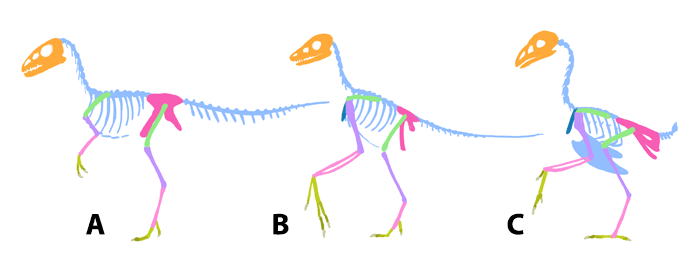
Anatomy of birds is well hidden under feathers, but once you think of them as dinosaurs, you should be able to imagine it without problems. For example, look at the jaws of a bird. What we see as a beak is only a part of normal dinosaur jaws.

That theropod skeleton is covered with muscles… which we never see. So we don’t really need to memorize their detailed look. You just need to understand that under all these feather there is a normal animal with a torso, long neck, thick thigh and calf, and a specialized arm. The body of a bird is simple and bulky, with hips fused with the chest, so you can imagine the whole main body as one element.
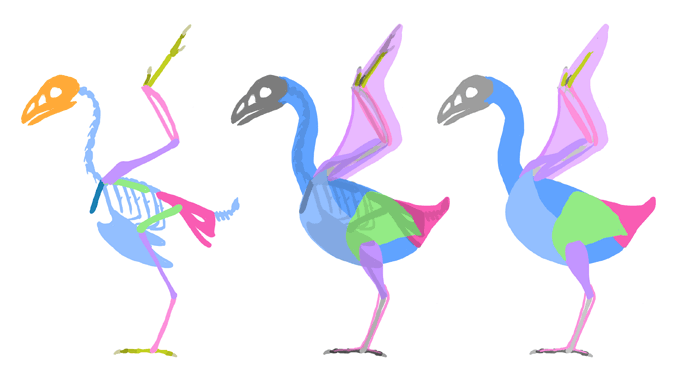
Let’s simplify the body now, using both bones and muscles for this:
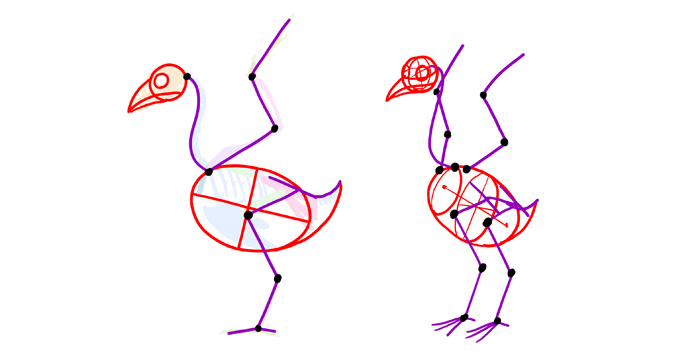
In the process for optimization for flight birds have lost their long tails. Because of this, the center of mass has been shifted closer to the chest, while the hips still stayed in the back. That’s why birds use their knee like a hip joint, and also why the ankle seems like a reversed knee.
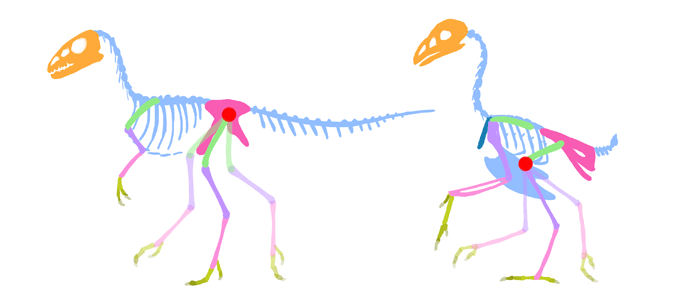
Bird Feathers Structure
We don’t have to draw bird muscles to draw their bodies realistically, but birds have some other part of visible anatomy that can’t be ignored—feathers. Feathers are grouped into parts of various functions, and these groups can be often distinctively colored, especially on the head. That’s why they’re so important in drawing:
- Crown: You can think of it as a cap.
- Supercilium: It’s like a wide, long eyebrow.
- Nape: It covers back of the neck kind of like long hair.
- Lores: Tine feathers cover this area between the beak and the eye. They can look like hair, and there’s often skin visible under them.
- Auriculars: This is a very distinctive area. It covers the ear, but you can think of it as a cheek.
- Malar: It goes along the lower jaw.
- Throat: Covers the throat, obviously.
- Breast: This is the “torso” of the bird, though these feathers are actually attached to the neck.
- Sides: These fluffy feathers cover the wrist when the wing is folded.
- Belly: These feathers don’t really grow from the belly, but from the sides of it. This way the bird can put an egg straight under the warm body, covered with the belly feathers on the sides.
- Flanks: The long feathers cover the leg above the heel.
- Undertail coverts: As the name implies, these feathers cover the base of the tail.
- Tail
- Mantle: A “cape” covering the back.
- Scapulars: Feathers covering the base of the wing. The wrist hides under them as well when the wing is folded.
- Wings
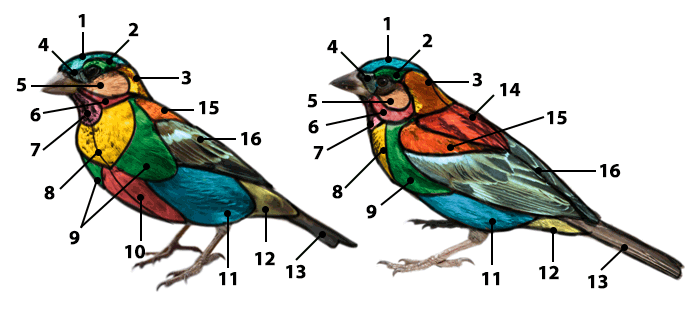
How to Draw a Bird Head
Birds are extremely diverse, but their head has a structure universal to all of them. So let’s see how to draw a “universal bird head”.
Start with an oval. Some species will be easier to draw with a circle, others with an ellipse.

Define the perspective of the skull with some directing lines.

Mark the jaw joint on the bottom of the skull.

Draw a long curve defined by the bottom of the upper jaw. The beak is wide near the base and narrows toward the tip.

Draw the curve of the upper part of the upper jaw, and lead it far to the back of the skull. This will be our guideline for the eyes.

Draw the lower jaw now. If you curve it backwards, you’ll create the second guideline for the eye socket.

Now, add the eyes and the nostrils.

Once you have all these guidelines, you can put the details in their place. The eyes are round and surrounded with thick skin.

The front of the jaws is covered with keratin, and that’s the actual beak. Notice it even has a kind of hard “lips”!

Finally, you can add the feathers. The easiest way to achieve a realistic effect quickly is to sketch the areas of feathers.

How to Draw Bird Feet
Birds have wings to fly, but they can’t spend all time in the air (though some definitely try). They still need their feet, but they also need them for various purposes depending on the species. That’s why their toes can be arranged in various ways. Before you draw some species, make sure you know what kind of arrangement they utilize.
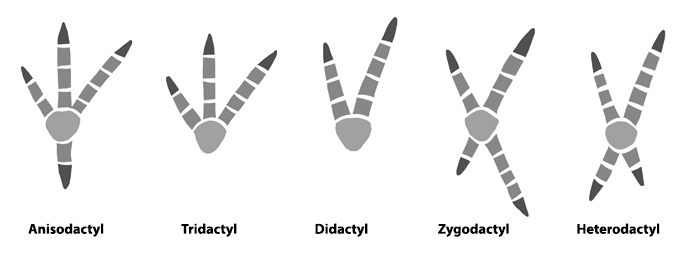
To draw the feet, start with sticks for legs.
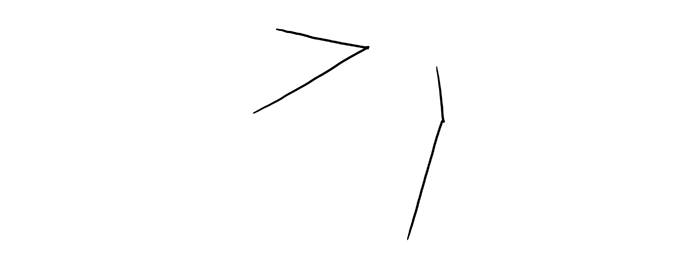
Draw a circle on the tip of each stick, and some circles for the ankle.
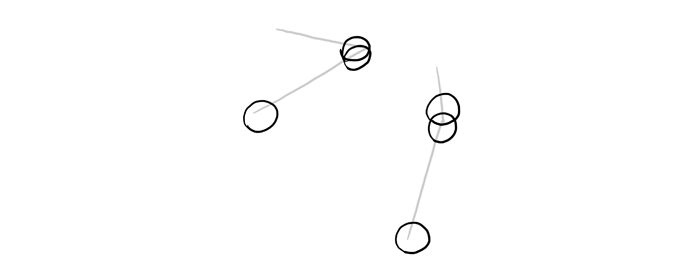
Sketch the toes. Their length and arrangement should follow from the styles presented before. End them with curves for claws.
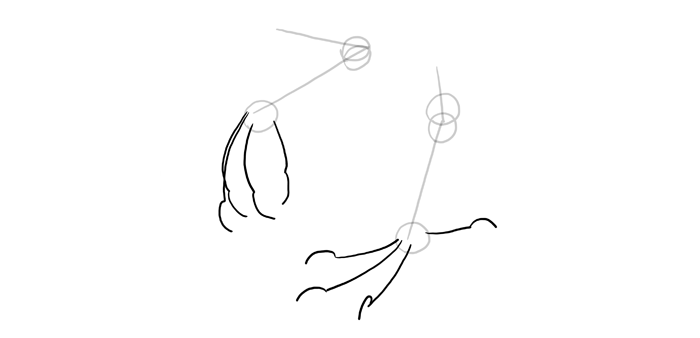
Imagine the toes are wires, and that you slip beads through it toward the base.
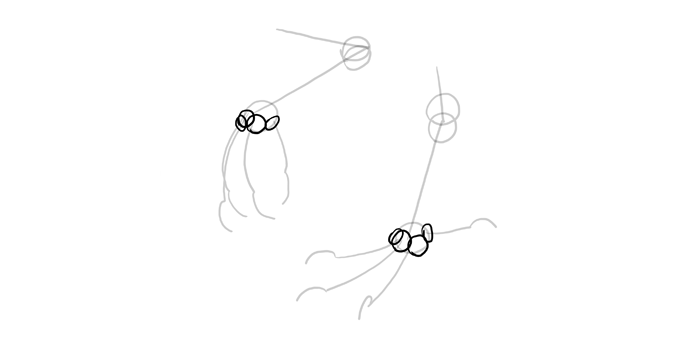
Now put a bead on the tip of each, right before the claw.
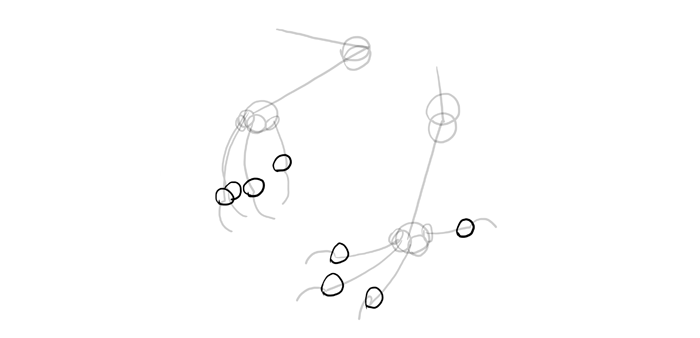
Put the rest of the beads in between, following the toe arrangement. The most popular arrangement is anisodactyl, that is 2-3-4-1 (counting from the body).
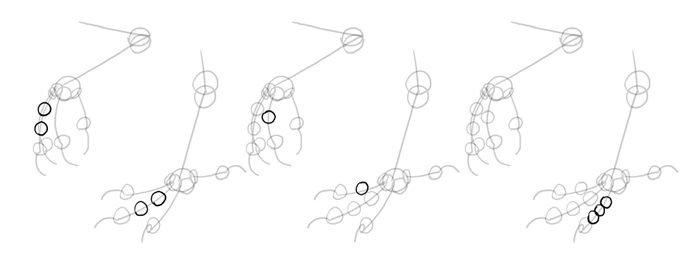
Once you have the guidelines, you can cover them with body, creating appropriate bums around the joints.
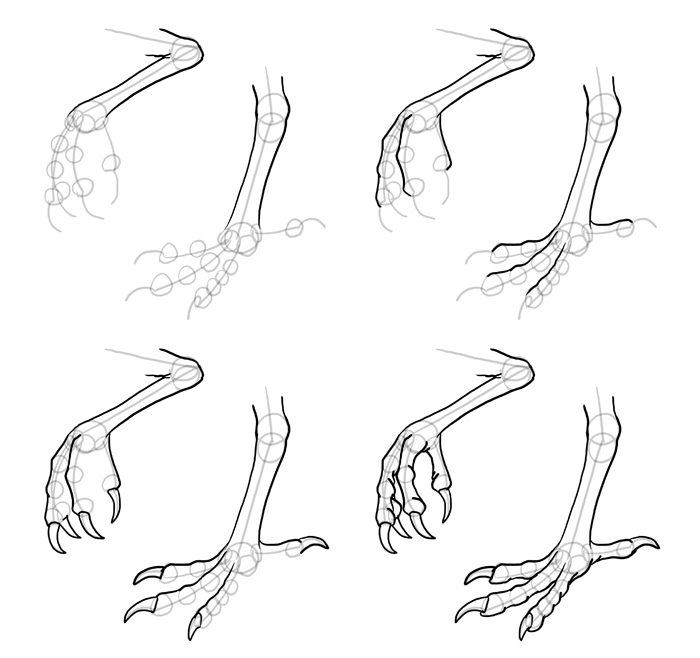
How to Draw Various Bird Species
There are many species of birds, all specialized to their way of living. So many, actually, that it would be impossible to describe them all. That’s why I will show you orders of birds rather than specific species. This way you’ll learn a “general recipe” for each kind of bird, but this theory must be completed with a lot of practice with a photo reference.
Perching Birds (Passeriformes)
This is the biggest group of them all, so we can consider the passerine body a classic bird body. All the songbirds belong here, as well as birds of paradise and ravens. The smaller the bird, the bigger its head in comparison to the body. The long tail makes the whole body seem elongated and slim.
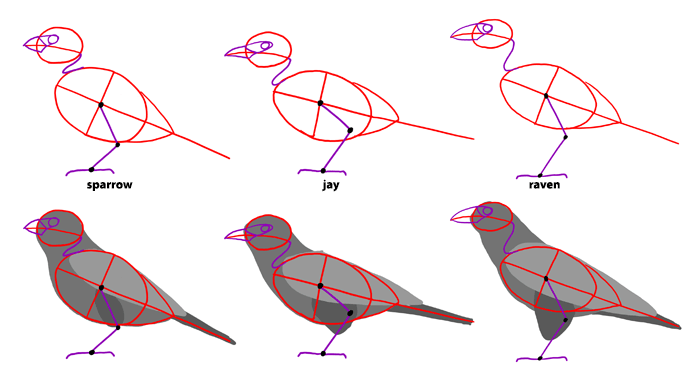
The beak is simple, sharp and thick. The eyes are usually dark, and in smaller species they look like shiny beads.
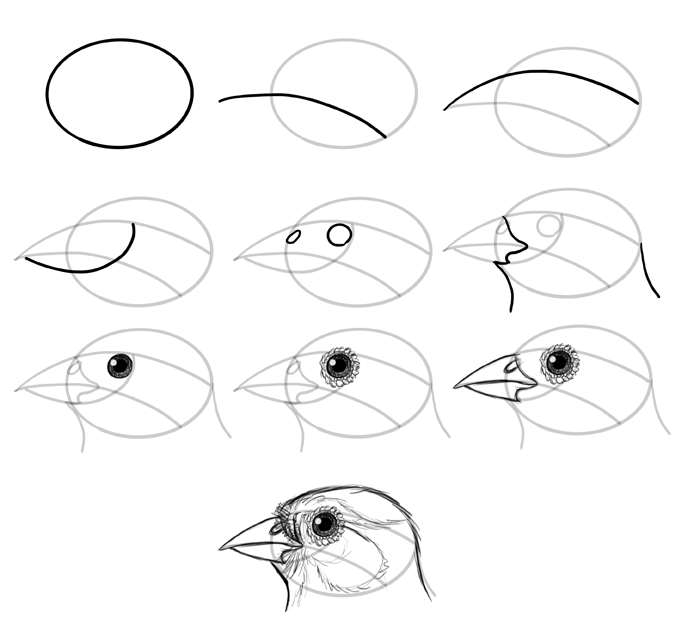
The wings follow a clear rhythm; in smaller birds primaries can be almost indistinguishable from secondaries.

Birds of this group, especially the small ones, have very thin and flexible toes, arranged in the anisodactyl fashion. The scales covering their top are elongated between the joints. These feet are optimized for perching.
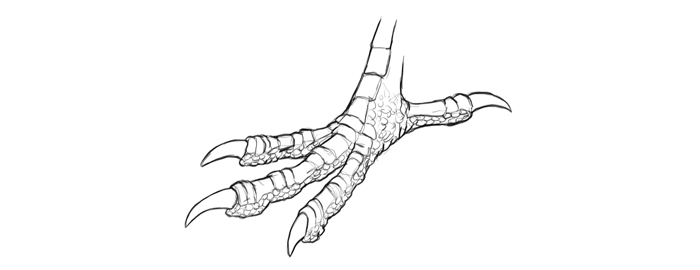
Landfowl (Galliformes)
This order includes all the chicken-like birds—big, heavy, better at scratching the ground than at flying. They have long necks and often oddly shaped tails (with the peacock as an extreme example).
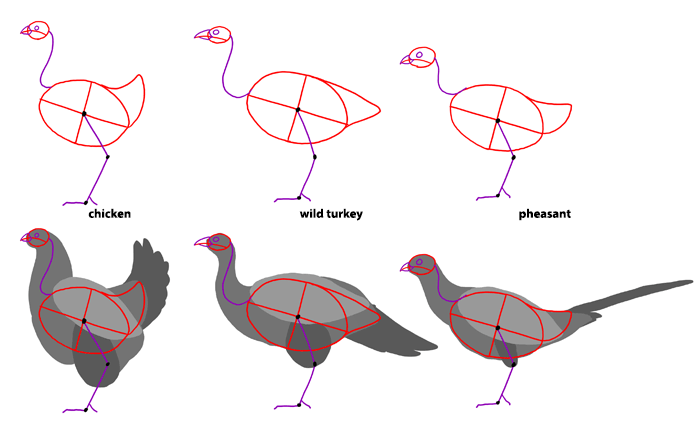
The beak of these birds is not as smooth as the passerine one, and it may be slightly hooked. The eyes are often bright, gold or orange, though they can be dark as well. There’s often skin visible somewhere on the head, at least around the eye, but it often makes weird fleshy structures, like the comb of the chicken.
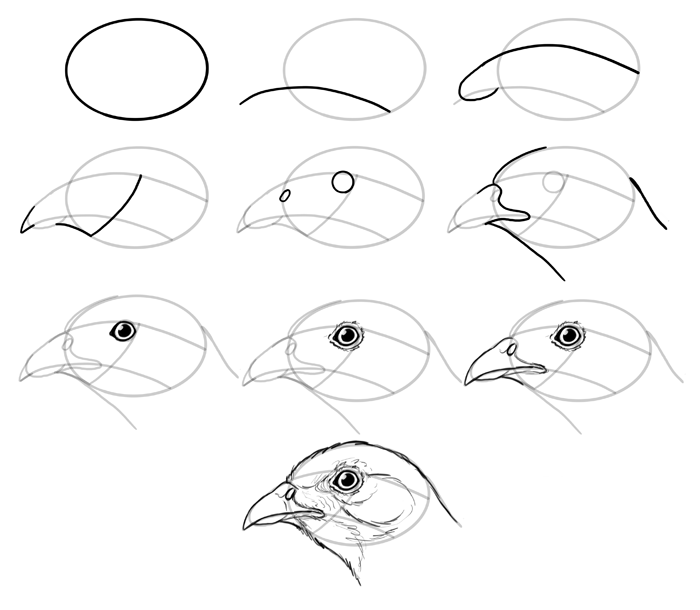
Because these birds walk more than fly, their wings don’t have to be highly optimized. They’re broad and rounded.

These birds have similar feet to the passerines, but they keep their “back toe” higher, and the toes are thicker. There’s slight webbing between the toes. The scales make neat overlapping rows. These feet are optimized for scratching.
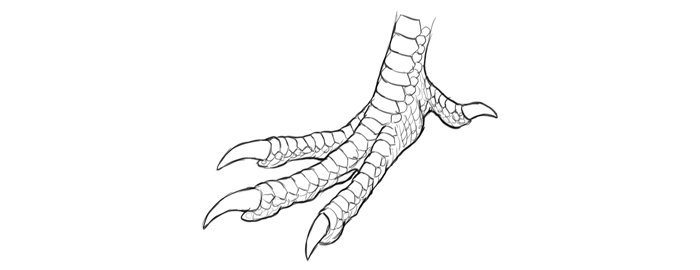
Falcon-like Birds of Prey (Falconiformes)
This is slightly controversial group, because the newest studies suggest that falcons are more related to parrots than to eagles or hawks. However, their look matters more to us than their genes, so it’s better for us to think of them as one group still. These predatory birds look like passerines, except they’re usually much bigger, with highly specialized beaks.
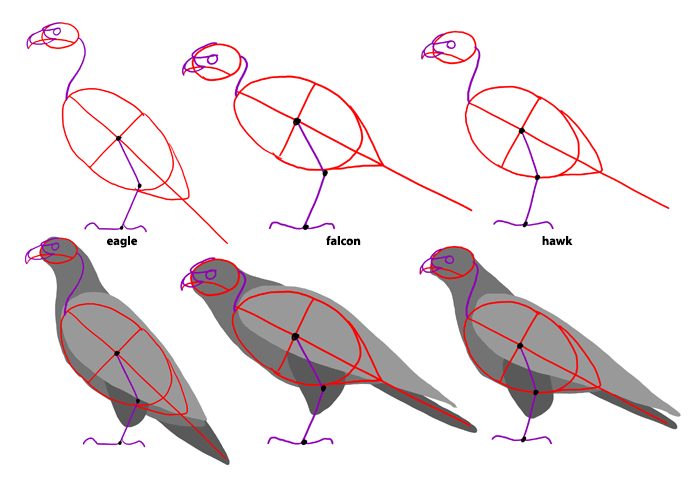
The beaks of falcon-like birds are hooked, and they have a special outgrowth around the nostrils. They also have bony eyebrows that give them an angry look. The eyes are located more in front of the face, which is characteristic for predators. Their colors range from golden to brown to almost black in falcons.
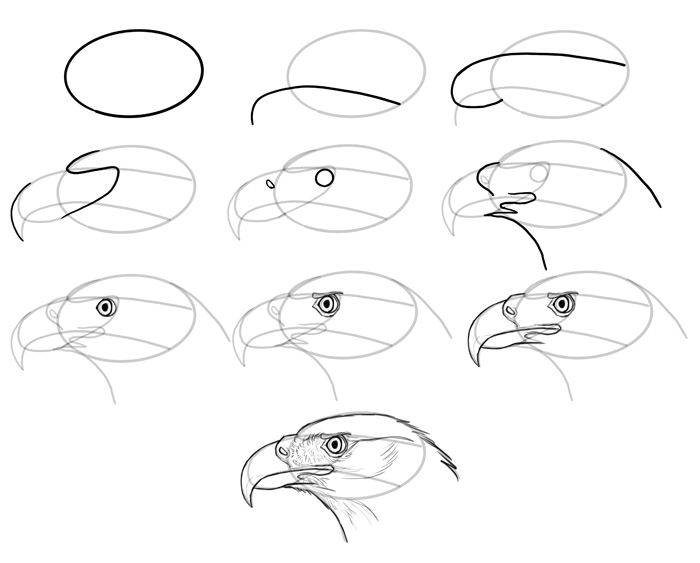
Birds of this group have various shapes of wings depending on their size and style of hunting. Eagles have long, “square” wings…

… falcons long and “sharp”…

… and hawks demonstrate a compromise between these both styles.

These birds have impressive talons specialized for catching prey. The toes are thick, covered with rows of big scales on top, and spiky scales on bottom (to create more friction).
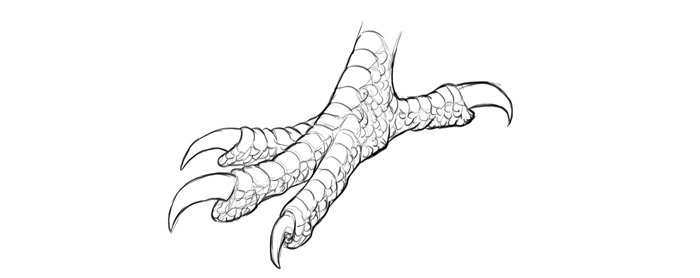
Waterfowl (Anseriformes)
This order includes the birds specialized for swimming. Their bodies are big, but flattened, with short tails and long necks.
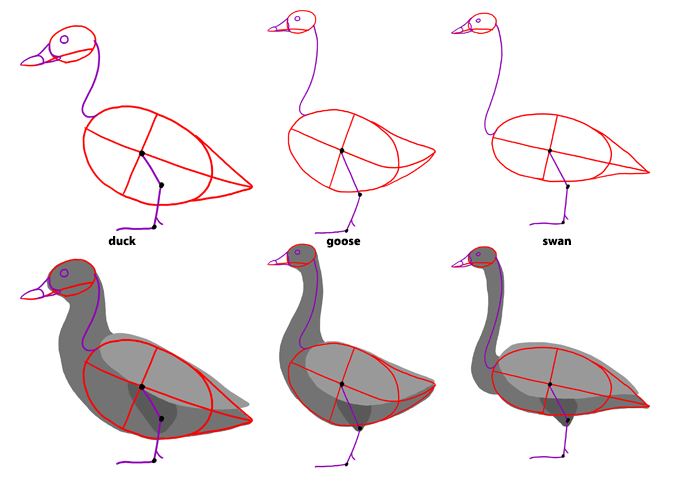
The beak of these birds is specialized for filtering food from the water. It’s flattened, blunt, and long. The cheeks are big and round, giving the bird a smiling expression. The eyes have a variety of colors, including blue and red.
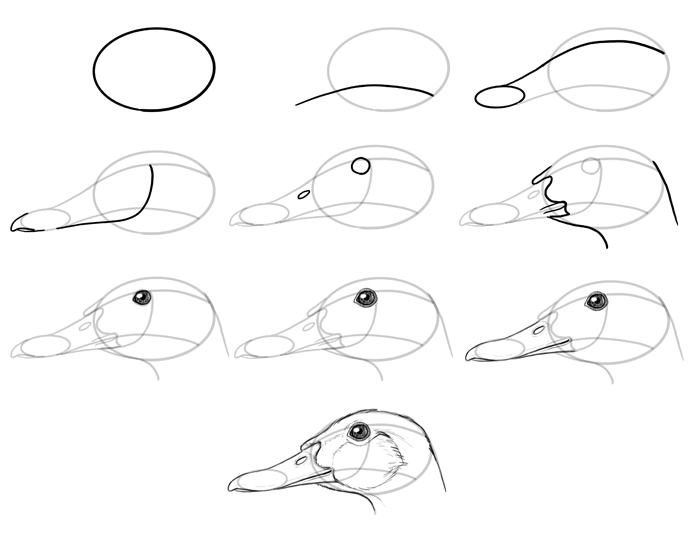
Wings of these birds are optimized for taking off from the water surface. They’re elongated, with a clear border between the primaries and secondaries.

Swimming birds have webbed feet with quite blunt claws. Their scales are arranged neatly in rows.
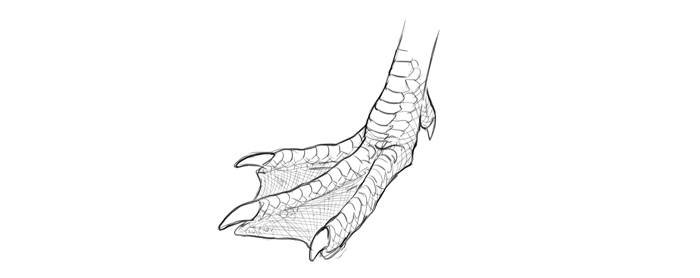
Owls (Strigiformes)
Owls are specialized for hunting in the night, so they have keen eyes and great sense of hearing. Their flattened face is supposed to gather sounds efficiently, and it’s made of feathers—there’s a normal round bird skull under them. The body is big, rounded, with almost no visible neck.
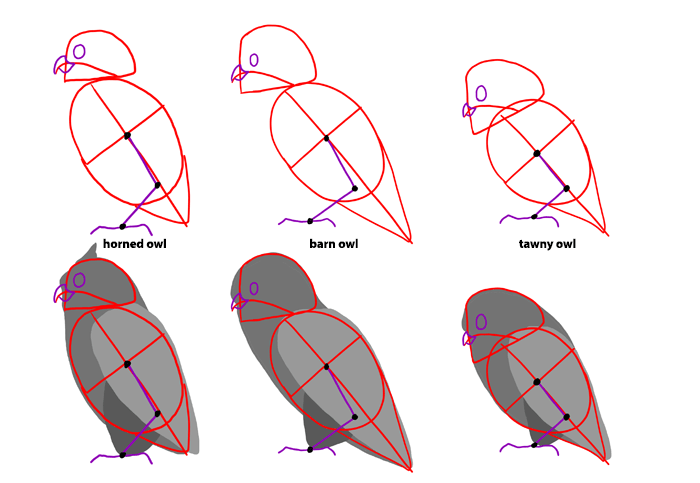
The beak is hooked, like in all birds of prey, but only a tip of it is visible through the feathers. The eyes are huge and placed in the front of the face. They’re usually brightly colored, gold or orange, but they can also be very dark (barn owls).
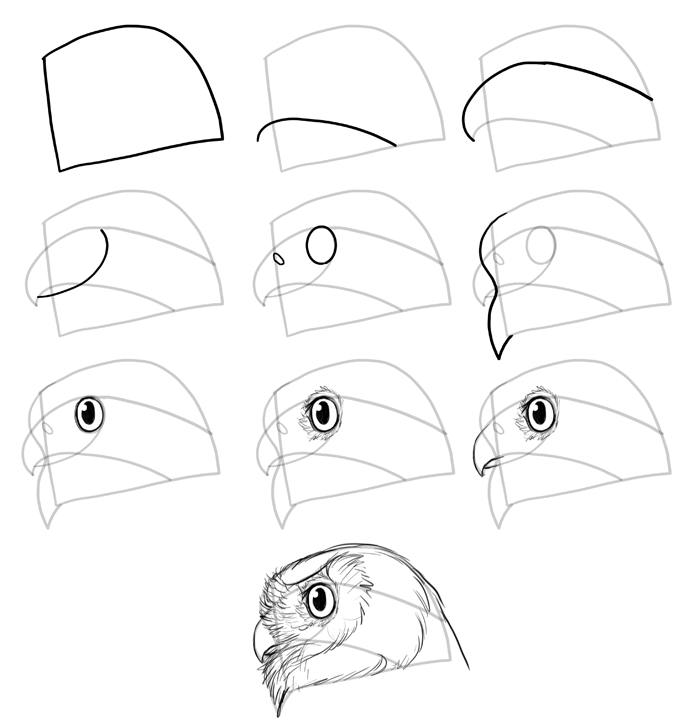
Owls have unique wings perfect for silent hunting. Their feathers are wide and rounded.

Owls are birds of prey, like eagles and falcons, so they have similar feet. There’s one difference, though—they’re zygodactyl. They’re also often quite furry.
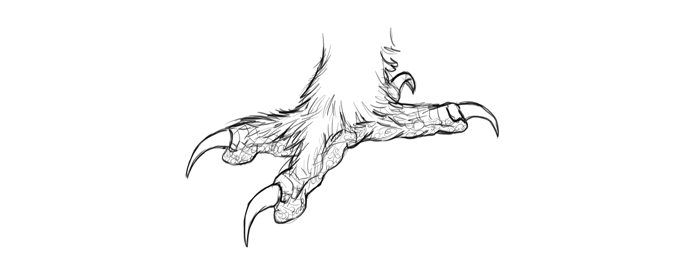
Parrots (Psittaciformes)
Parrots have a smooth body elongated by their long tails. The head is quite big and round.
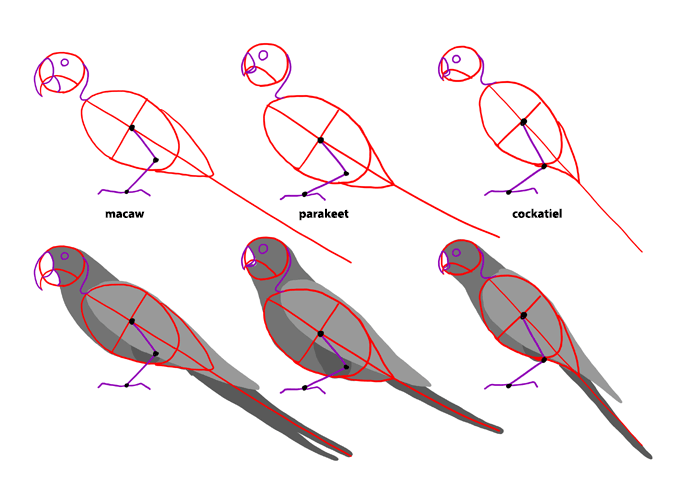
Parrots have a rounded, hooked beak that seems to be a part of the face. Their eyes have a variety of colors, sometimes multiple colors in the same eye! The eyelids have rows of little bumps on the edges, and they can be colored as well.
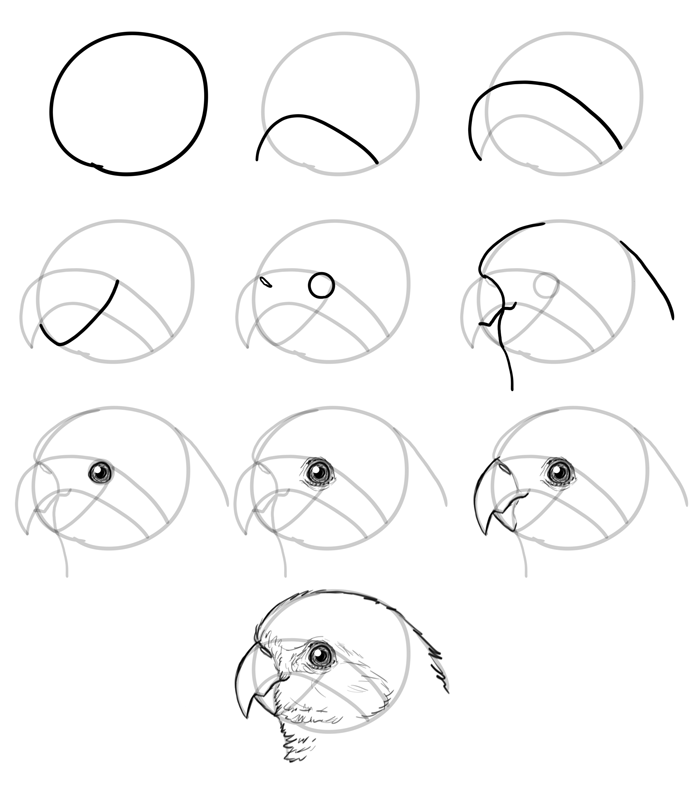
Parrots have long wings with elongated primaries, similar to those of falcons.

Most parrots are zygodactyl, like owls, but their claws are not near that impressive. The scales start big near the claws, and then they turn into horizontal rows.
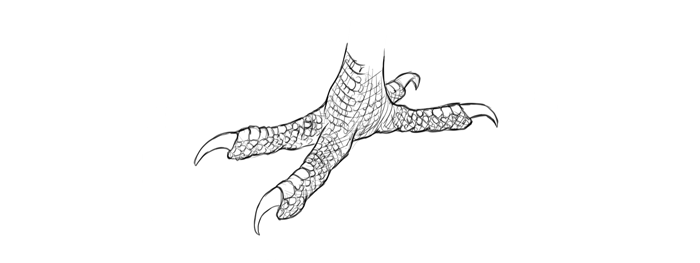
Ostrich-like (Struthioniformes)
These birds don’t fly, but they’re most definitely birds. They have huge bodies with ridiculously long legs and necks. Their feathers can even look more like fur than real bird feathers.
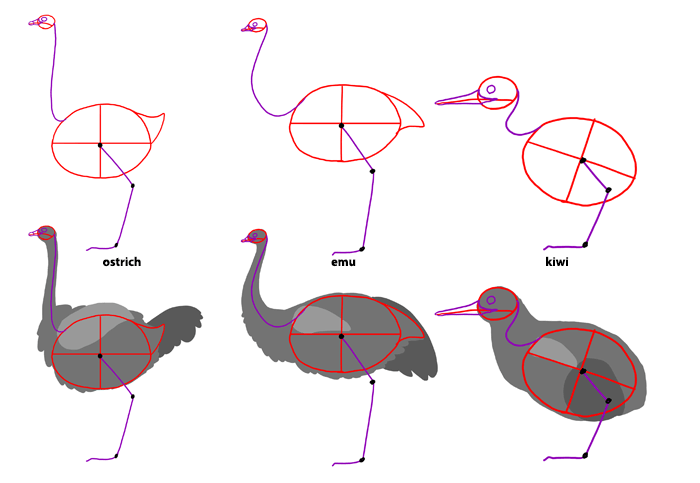
Ostriches have usually a long, flattened beak with a blunt tip, and huge eyes. The head is covered with fluffy, bristle feathers.
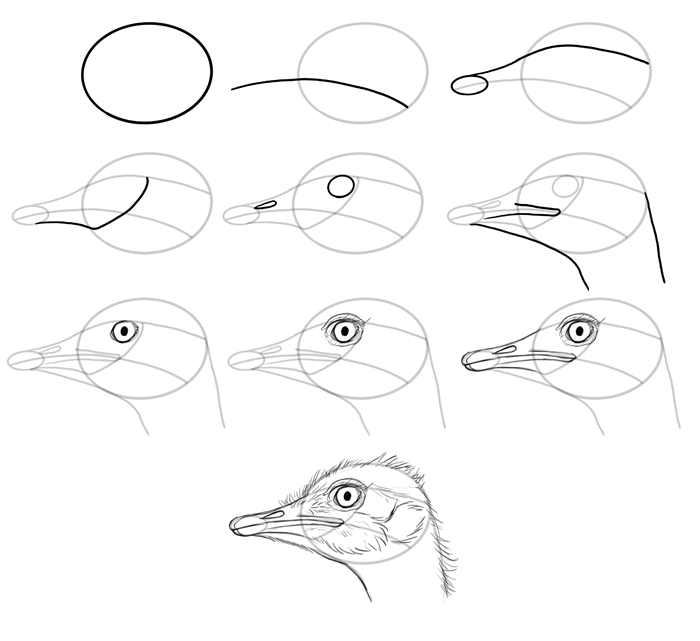
Because birds from this order don’t fly, their wings are mostly vestigial. In emus they’re indistinguishable from the rest of the plumage, and the common ostrich (shown below) uses them for showing off or to protect its young.

These weird birds have weird feet as well. Common ostrich is ditactyl, and emu (below) is tridactyl. The feet are big, with thick toes and claws often blunted by contact with ground.
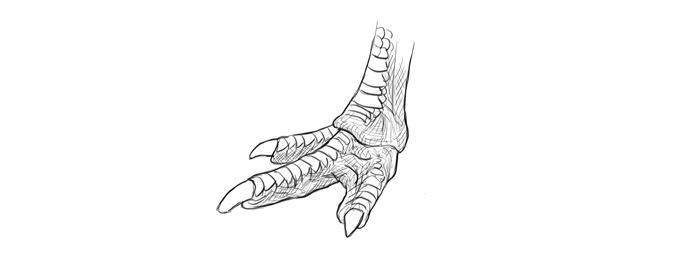
How to Draw a Bird Step by Step
That was theory, but how to actually draw a bird? Let’s draw a member of each group step by step.
Step 1
Sketch the general silhouette quickly and loosely, including the position of the wings.
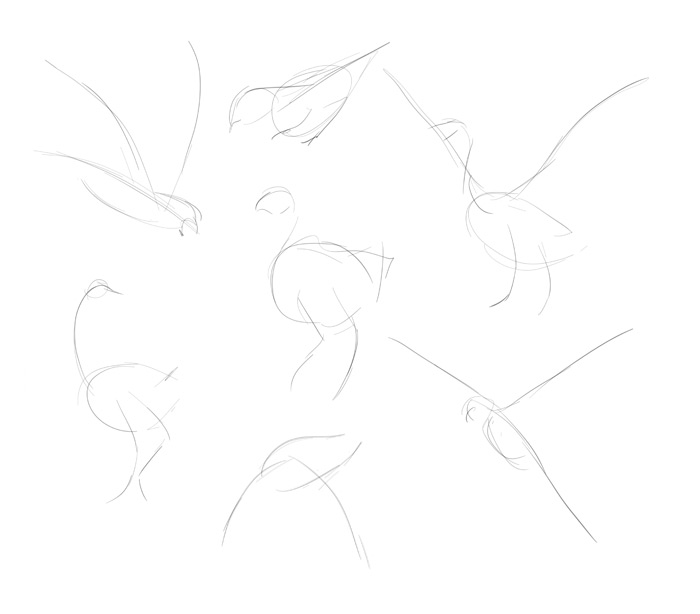
Step 2
Draw the torso, defining the perspective in the process.
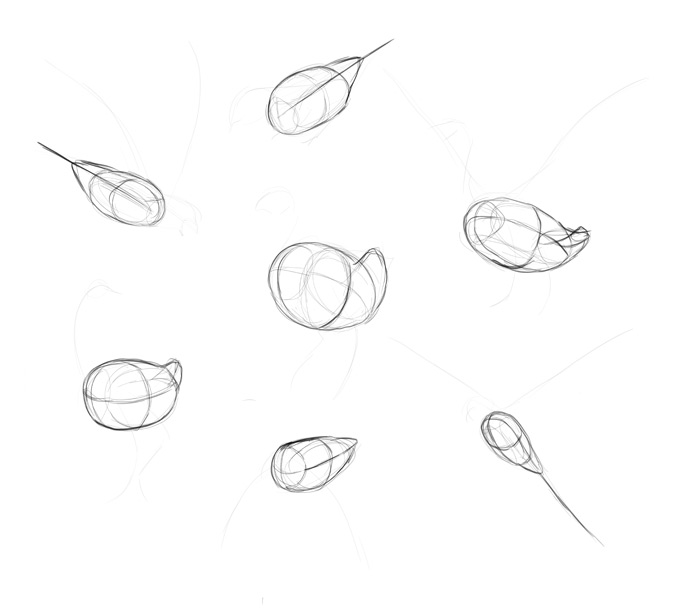
Step 3
Add the sketchy legs. Notice that there’s no need to include the thigh bone.
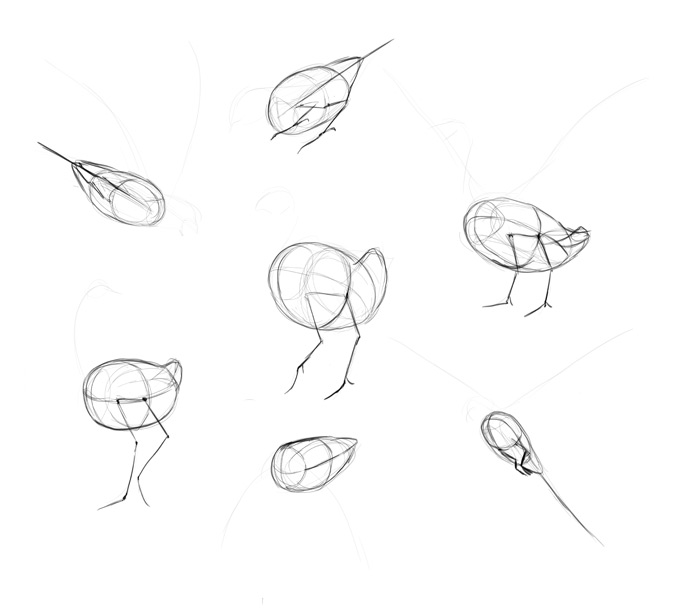
Step 4
Add the head and neck. Because the neck is so flexible, you can draw the head basically anywhere you like and then connect it to the body.
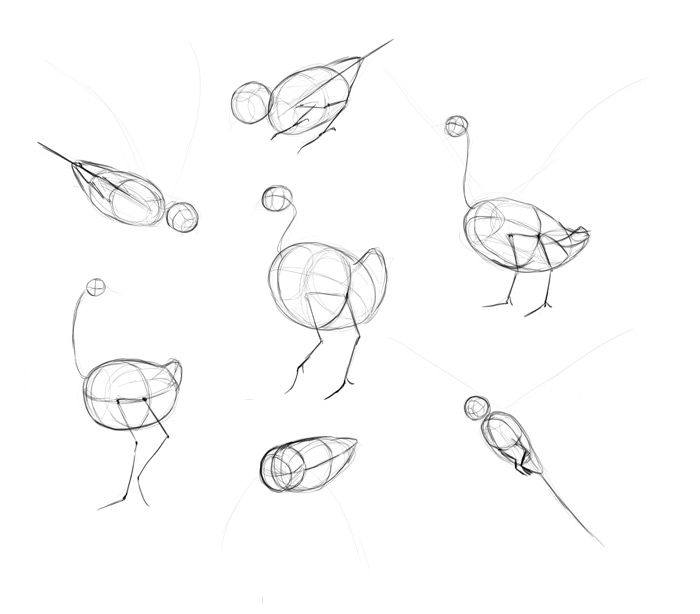
Step 5
Draw all the elements of the head now, following the perspective of the head.
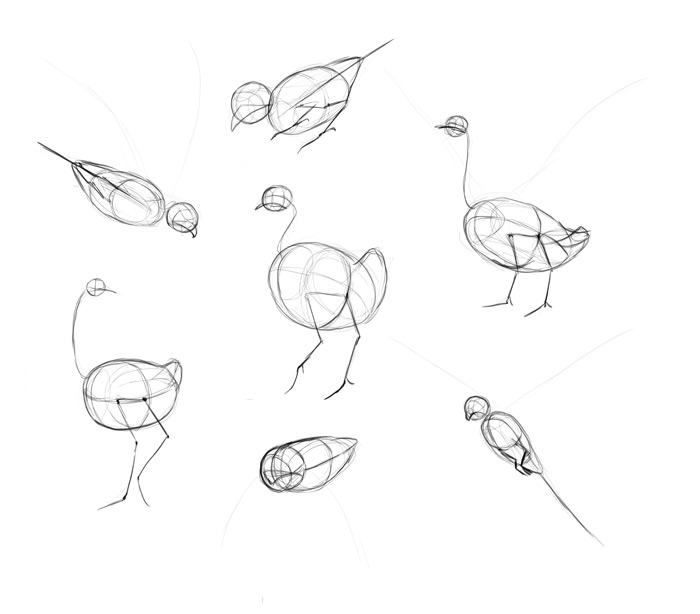
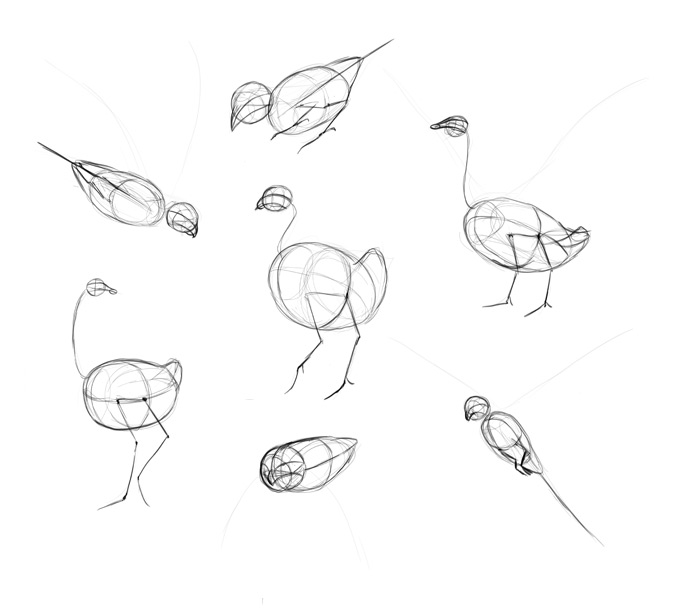
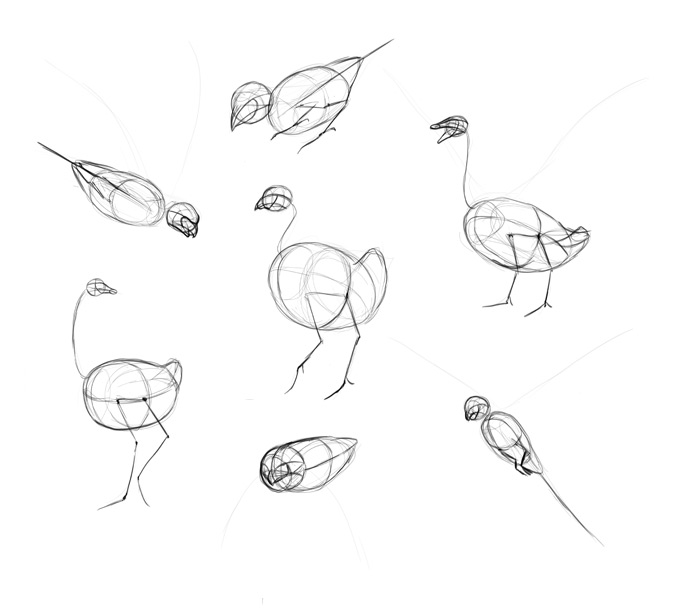
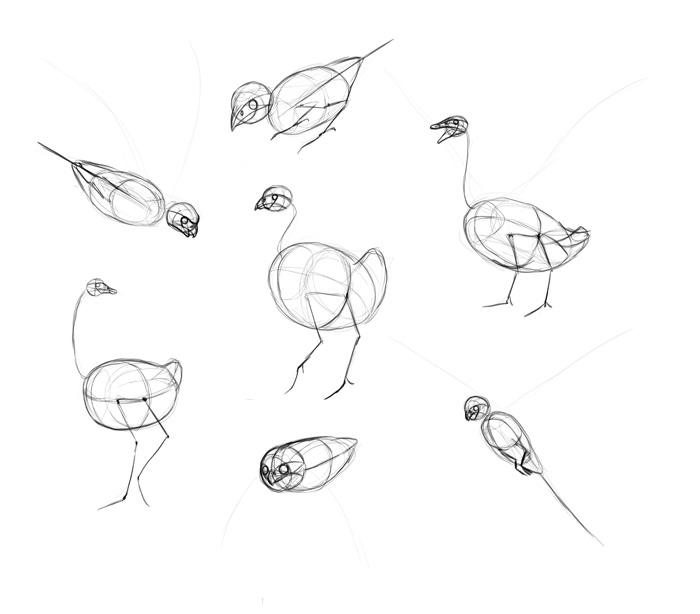

Step 6
When the head is finished, draw the actual neck.
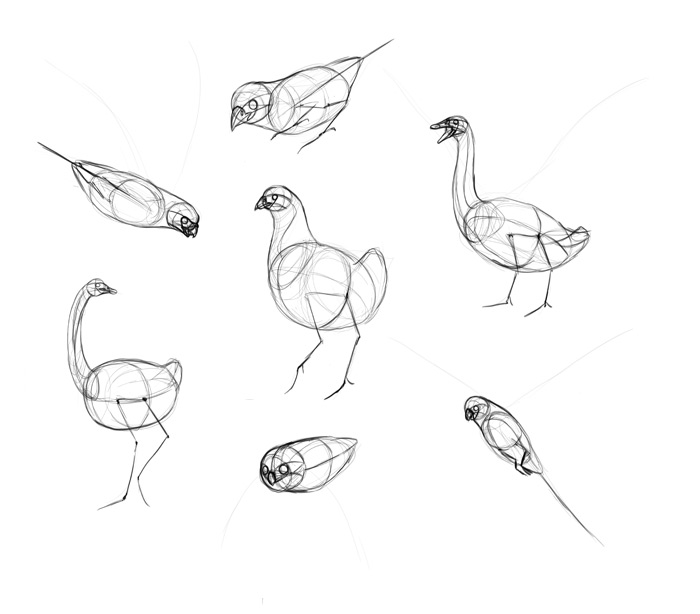
Step 7
Take a closer look at the feet now. How many toes does your bird need?
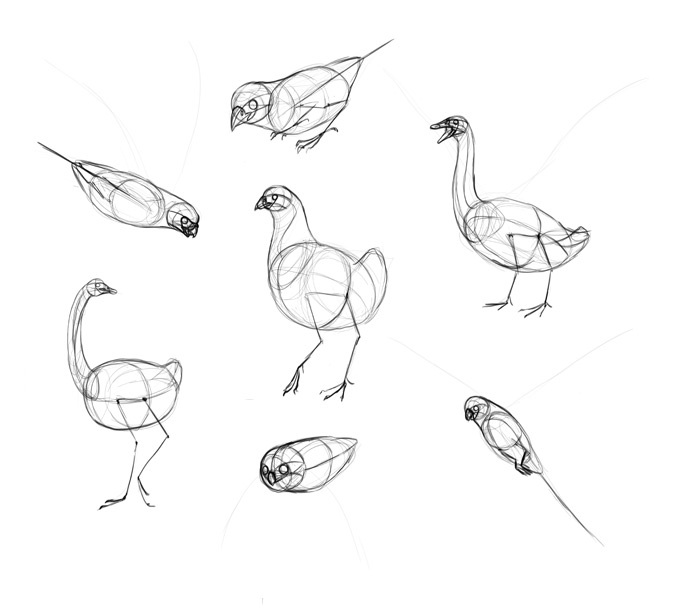
Step 8
Give the beads of joints to each toe according to the arrangement. You don’t need to be super accurate if your drawing is small.
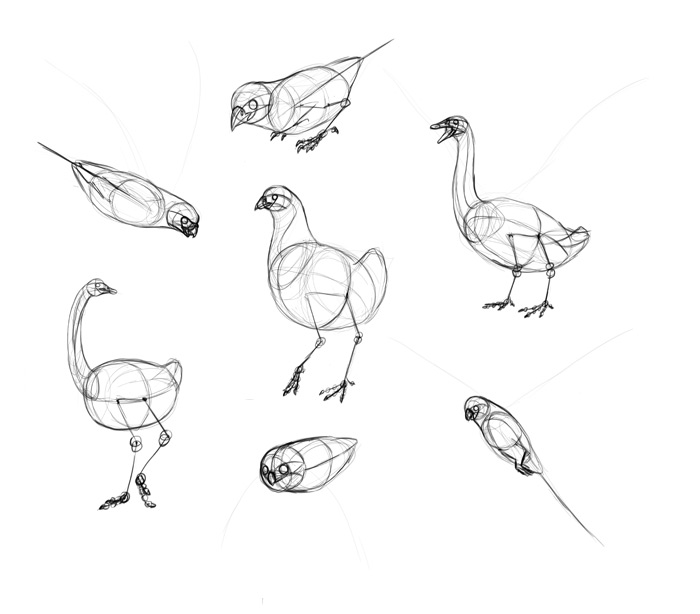
Step 9
Time for the wings and tail! If you haven’t already, check out How to Draw and Animate Wings: Birds, Bats, and More to learn how to do it.
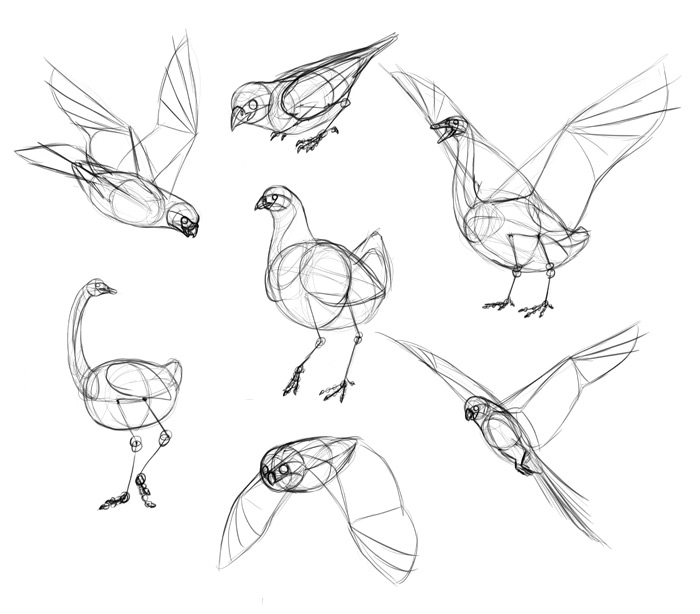
Step 10
You can now add all the details. It’s good to use a reference at this point.
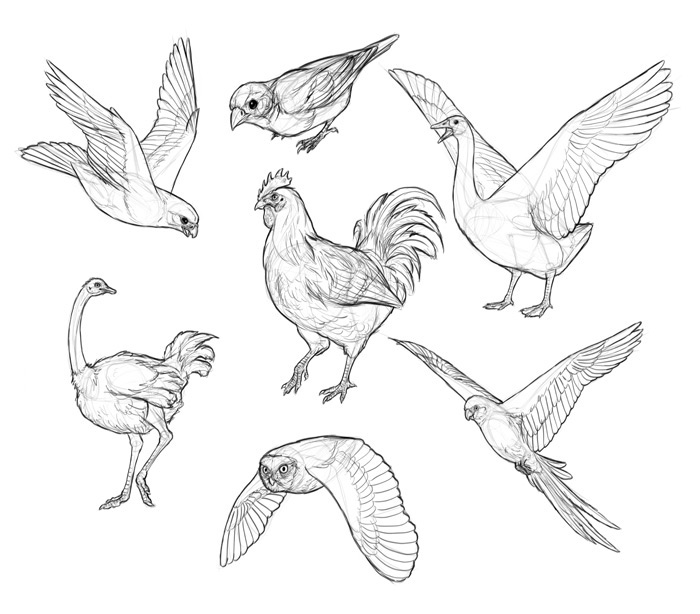
Step 11
Finally, you can color your birds.
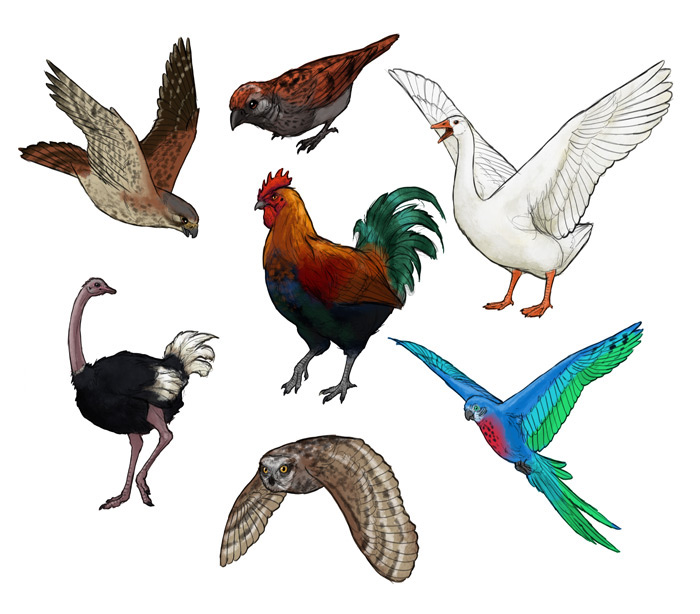
That’s All!
But don’t stop here! Use your practical knowledge now to draw a lot of various birds from references. Train your hand and brain to make the whole process automatic. Learning is not only about understanding, but also about regular practice!

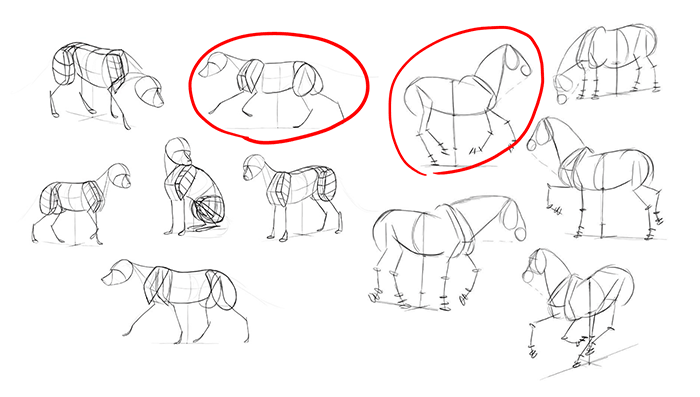
1 Comment